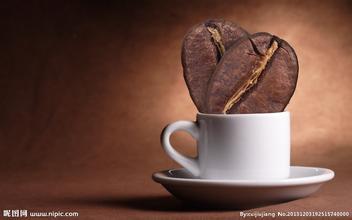What is water treatment?
1. Choose beans:
Put the harvested fruit in a water tank and soak for about 24 hours. At this time, ripe fruit will sink, while immature and overripe fruit will float up and can be removed.
2. Remove the pulp:
Use a machine to remove the peel and pulp, leaving only coffee beans wrapped in endocarp. At this time, there is a layer of mucous membrane on the outside of the beans, and the process of washing is to wash this layer of mucous membrane.
3, fermentation:
The adhesion of the mucous membrane is very strong and is not easy to remove. It must be placed in the tank for about 18-36 hours to ferment and decompose the mucous membrane. There are two methods of fermentation, namely wet fermentation and dry fermentation. As the name implies, the former adds water and the latter does not add water. In the process of fermentation, the seed and internal pulp will produce special changes, which is one of the steps that most affect the flavor of coffee. Some farms add hot water or enzymes to speed up fermentation, which has a negative impact on quality and is not popular with selected coffee lovers.
4, washing:
Farms that use the washing method must build washing ponds and be able to introduce an endless supply of running water. During the treatment, the fermented beans are put into the pool and passed back and forth, using the friction of the beans and the power of running water to wash the coffee beans until smooth and clean.
5, dry:
After washing, the coffee beans are still wrapped in the pericarp with a moisture content of 50%. They must be dried to reduce the moisture content to 12%, otherwise they will continue to ferment and become moldy and rotten. The better treatment is to use sunlight to dry, although it will take 1-3 weeks, but the flavor is very good and very popular. In addition, machine drying is used in some places, which greatly shortens the processing time and makes the flavor not as good as that of sun-dried coffee.
6, shelling:
The dried beans can be stored in a warehouse or handed over to the factory for shelling to remove endocarp and silver film.
7, selection and grading:
Like the tanning method, washed coffee has a process of selection and grading, which is used to remove defective beans and ensure better quality, which is then handed over to exporters to sell around the world.

Important Notice :
前街咖啡 FrontStreet Coffee has moved to new addredd:
FrontStreet Coffee Address: 315,Donghua East Road,GuangZhou
Tel:020 38364473
- Prev

Small details about the filter cup that you overlooked.
Big coffees who are keen on making hand-brewed coffee all have one or two sets of coffee utensils that are easy to use, and these seemingly obvious items actually contain a lot of interesting little secrets. Like a filter cup. There are many kinds of filter cups, you may have Melitta,Kalita,KONO in your hand, no matter which one has its own characteristics, then these unique designs will be suitable for coffee.
- Next

There are five advantages to drinking plain coffee
Picking, baking and grinding a cup of pure coffee in front of us has gone through many processes. Some people think that caffeine will lead to insomnia, addiction, obesity, etc., and avoid it. In fact, the harm of coffee to health is not as serious as you think, as long as you know coffee, you can actually drink more health benefits. First of all, as mentioned below,
Related
- Beginners will see the "Coffee pull flower" guide!
- What is the difference between ice blog purified milk and ordinary milk coffee?
- Why is the Philippines the largest producer of crops in Liberia?
- For coffee extraction, should the fine powder be retained?
- How does extracted espresso fill pressed powder? How much strength does it take to press the powder?
- How to make jasmine cold extract coffee? Is the jasmine + latte good?
- Will this little toy really make the coffee taste better? How does Lily Drip affect coffee extraction?
- Will the action of slapping the filter cup also affect coffee extraction?
- What's the difference between powder-to-water ratio and powder-to-liquid ratio?
- What is the Ethiopian local species? What does it have to do with Heirloom native species?

